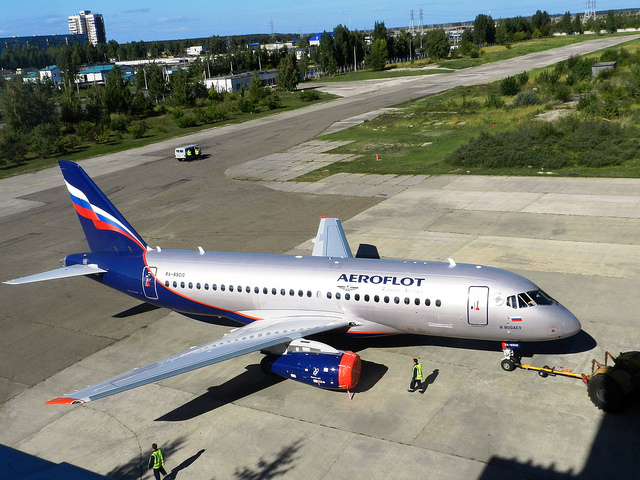
A Gazprom Yak-42D – Photo: Bernie Leighton | AirlineReporter
Many people used to call Southwest Airlines an “oil company with wings.” Well, what if you could find an oil company that ran an airline on the side? I did.
Gazprom is the world’s largest extractor of natural gas. Not only that, they have also extracted tens of millions of barrels of crude oil. They are one of the largest companies in Russia. One interesting thing is that around 2,800 of Gazprom’s 393,000 employees work in their aviation division.
Is this a private employee shuttle? Not always. At first glance, one would assume their fleet of Superjets, Yak-42Ds, Tu-154Ms, and even 737-700s (as well as over one hundred helicopters) ply the vast Siberian and Arctic skies from oilfield to oilfield. Nope — they also provide scheduled passenger service. One would think this would be an easy way to catch a ride on a Yakovlev Yak-42 . This is Russia; there’s always a catch!

The old website… gone forever. See ya!
YES! Our website redesign has arrived, sorry it took so long, but I think it was worth the wait.
We now offer a new look that is not only fresh, techie, and clean, but it also is mobile friendly — something that has been the #1 requested update. We started the upgrade on Sept 9th and things are pretty well set at this point, but design is always an evolving process.
We have also recently updated the way our comments are handled and I think it is really cool. You get emailed a reply to your comment and you don’t have to come back to the site (you still can, if you want), just hit reply to the email, hit send, and the comment will be added to the story.

JA873A, better known as “The R2-D2 plane” rolled out of the paint hangar – Photo: Bernie Leighton | AirlineReporter
It’s finally here!
We’ve waited months to see ANA bring their cross-promotion with Disney Japan for Star Wars: The Force Awakens to light, and boy was it worth it!

Just look at it! The attention to detail is stunning! Photo: Bernie Leighton | AirlineReporter
This aircraft is, of course, the first of three in the ANA Star Wars line. ANA takes its partnership with Star Wars seriously. How seriously?

An Aeroflot Superjet – Photo: SuperJet International
Many people seem to think that Aeroflot is the same beastly monolith that it was before, and immediately after, the collapse of the Soviet Union. Aeroflot is still the butt of jokes the world over. Regardless of the ill-informed jabs, what’s so bad about the Aeroflot?

The more I read online, the more I realize many people think all Russian planes look like this Bartini Beriev VVA-14, and are full of goats – Photo: Bernie Leighton | AirlineReporter
I get it; Aeroflot had a very bad reputation within the past few decades (let’s say about 1983-1995), but that was over 20 years ago. Aeroflot is by far playing in the big leagues now, in terms of safety, comfort, service, and median fleet age.
See, I never understood all of that either nationalist chauvinism or cultural cringe. I’ve wanted to fly Aeroflot since I was a child.

United will hopefully be going a new direction – Photo: United Airlines
United Airlines’ CEO Jeff Smisek is no longer the CEO. Nor is he even on the board, which he used to chair. It’s a rarity for an airline CEO to make such a grand exit without telegraphing the move to not only the board of directors and shareholders, but even senior management.
There is usually one reason for this. The biggest fear any businessman can face: a federal investigation.






